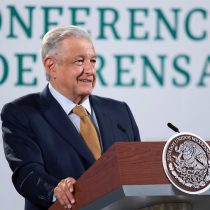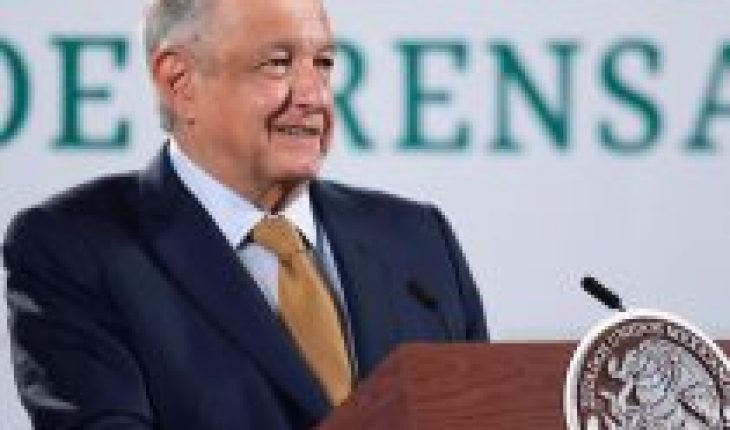
The most surprising result of Mexico’s last midterm elections was the apparent divorce between Andrés Manuel López Obrador (AMLO) and the voter in Mexico City (now renamed CDMX). More than half of its territorial divisions passed into the hands of the opposition, painting an electoral map of the city split in two: to the west the opposition, to the east the ruling party. The defeat in the country’s capital was painful for AMLO for two reasons. First because that’s where his political career took off, and second because he left his political goddaughter and current mayor Claudia Sheinbaum in a bad light.
Their reaction was one of disbelief first and denial later. How is it possible that the city you think of the left voted for right-wing parties? This shows that they do not know where they stand: the CDMX does not have a left-wing vocation but an opposition vocation.
AMLO is due to CDMX
To begin with, it should be noted the importance of the CDMX in AMLO’s political career. It was in the capital where the current president studied his bachelor’s degree in Political Science, and it was there that he arrived from his native state of Tabasco with his family in 1996 to preside over the leftist Party of the Democratic Revolution (PRD), his first position with national projection. From that position he built his candidacy for the Head of Government of the then Federal District (DF) in 2000, not counting the five-year residency requirement, it must be said.
Already installed in the Chief’s Office, from the first day of his administration he used the spotlight and resources of the office to position himself politically with a view to the presidency. His strategy was simple: fight every day with the federal government of the right-wing National Action Party (PAN) headed by Vicente Fox (2000-2006), even if it were over trifles such as daylight saving time.
In this way, AMLO transformed the Head of Government of the DF into the beachhead of the opposition to the federal government. The highest point of confrontation between the two levels of government occurred in 2005 when Fox clumsily tried to remove AMLO from the presidential race. The city then surrounded its mayor and supported him with mass mobilizations that forced Fox to back down.
But AMLO would pay ingratitude. After losing the 2006 election to Felipe Calderón, he accused fraud and sent his followers to block Avenida Reforma as a pressure measure to cancel the elections. Overnight the most elegant avenue of the capital was drilled with mallets and pikes to set up stalls where his supporters made guards to force the breakdown of the constitutional order. The economic losses for businessmen, merchants, employees and restaurateurs in the area were then estimated at 7 billion pesos and dismissal of more than three thousand workers.
The 2012 presidential election was coming and the city forgave AMLO for the 2006 outburst by voting massively for him again. On that occasion he won in the city by two to one in votes the winning candidate of the election, Enrique Peña Nieto of the Institutional Revolutionary Party (PRI). But what do you think: AMLO again accused fraud, although this time the difference in votes did not give him the strength to carry out mobilizations as in 2006.
The story of AMLO and the CDMX would not end there. In 2014 he founded in the capital his own personal party, the National Regeneration Movement (MORENA), with which he swept the 2018 elections, not only in the city but in the entire country. Note that MORENA is a party created in the CDMX, not in Tabasco or any other state of the republic.
The loss of the CDMX
All of the above explains why the loss of space in the capital was so painful for AMLO, and why he has been insulting the capital’s middle classes for weeks for turning their backs on him. He is moved not only by wounded pride but also by political calculation: MORENA’s presidential candidate in pectore heading into 2024, Mayor Sheinbaum, was badly hurt by the election results.
Sheinbaum is a cold, academic-style politician who contrasts with the president’s hot-bloodedness and warmth, but who has earned his affection for his absolute loyalty, something the president values above all else. The results, however, showed that his dolphinacking and enthronement are no easy task.
Amlo and Sheinbaum’s problem is that they refuse to see reality. So many years in power have led them to believe that the city is “left-wing.” They are wrong, the CDMX has a vocation as an oppositiontion. AMLO and Sheinbaum confuse one thing with the other.
This oppositional vocation is not new, moreover. During the era of the PRI’s authoritarianism in the twentieth century, the city was always the stronghold of opposition parties, both right and left. Already in 1976 during the heyday of the PRI, the votes for the opposition in the CDMX were three times the national average. The same can be said after the conclusion of the democratic transition (1976-1996).
The PRD governments of Cuauhtémoc Cárdenas (1997-2000), AMLO (2000-2005), Marcelo Ebrard (2006-2012), and Miguel Mancera (2012-2018) were always seen as “opposition governments” (an oxymoron commonly used in Mexico). These governments had the support of a city citizenry that saw in them a healthy counterweight to the federal government of the PAN and later of the PRI. Why should things be different now?
With the results of last June, the CDMX is once again the epicenter of opposition to the federal government. This new reality has been very difficult for AMLO to accept, who today considers himself an opponent of elite power. His problem is that the people, and especially the capitals, see him less and less as an opponent and more as what he is: an authority. An authority, moreover, incidentally, which offers a lot of policy, but few results.
*Professor of Political Science at the University of Toronto and PhD from that university. Master in Political Science from univ. of Calgary. Specialized in democracy and authoritarianism in Mexico. Senior Editor at Global Brief Magazine.
www.latinoamerica21.com, a pluralistic medium committed to the dissemination of critical and truthful information about Latin America.
The content of this opinion column is the sole responsibility of its author, and does not necessarily reflect the editorial line or position of El Mostrador.





